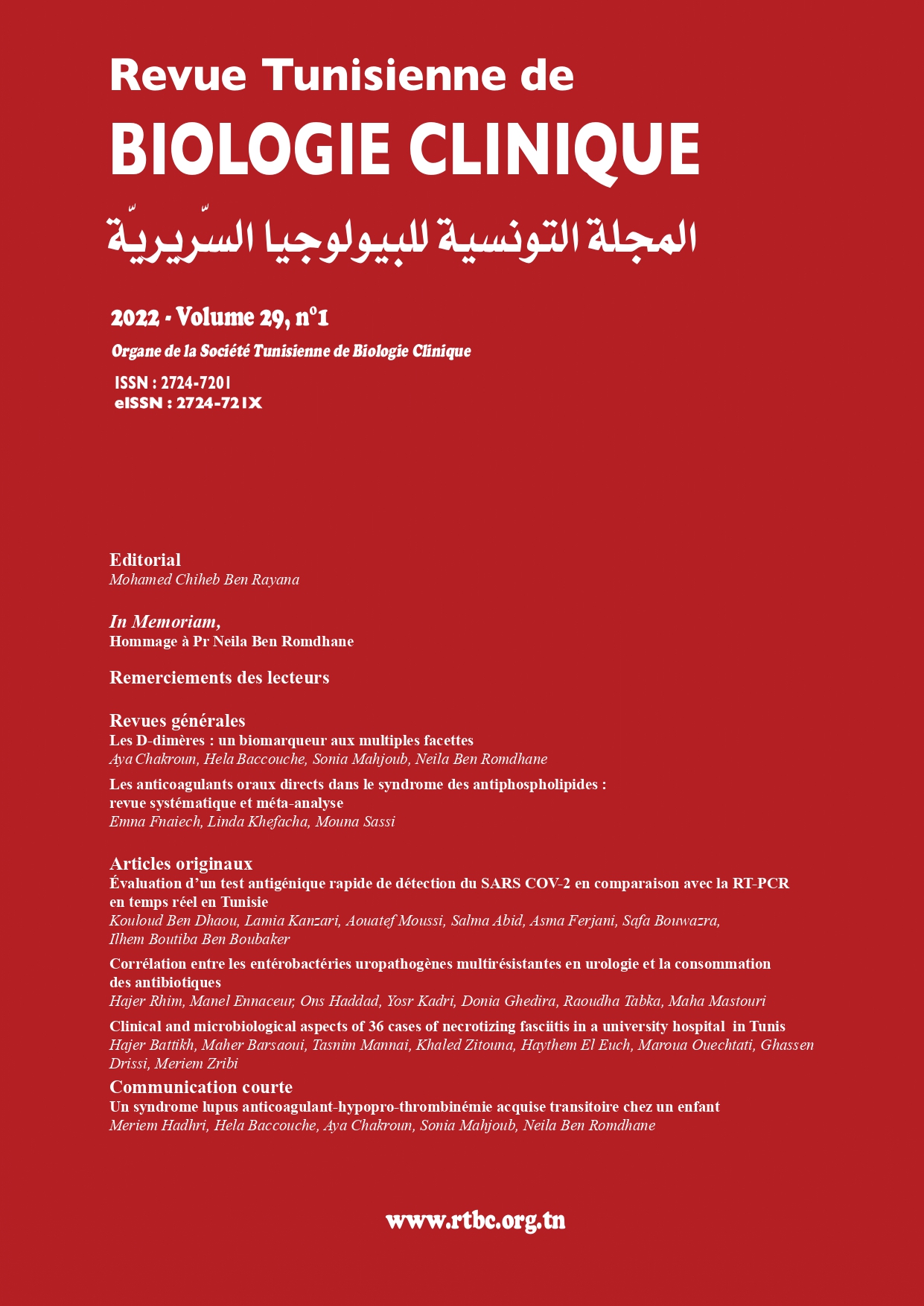Abstract
Introduction: Multidrug-resistant enterobacterial urinary tract infections are an ongoing concern in urology. The objective of our study is to draw up the bacteriological evolutionary profile of multiresistant enterobacterial urinary tract infections and to study the consumption of antibiotics in urology in order to find a possible correlation. Materials and methods: Retrospective study between January 2016 and December 2020 on strains of multiresistant enterobacteria isolated from urine in patients hospitalized in the urology department of the University Hospital of Monastir. Results: During the study period, 200 strains of enterobacteria were resistant to 3rd generation cephalosporins (ER3GC) (i.e. a prevalence of 28.6%), 85% of which were extended specter betalactamases producers. Escherichia coli was the most represented species (57.5%). The analysis of the sensitivityof ER3GC showed a considerable associated resistance to fluoroquinolones (97%), gentamicin (72%) and cotrimoxazole (79%). Resistance to ertapenem and amikacin was 3% and 8% respectively. No statistically significant correlation was found between the use of cephalosporins of 3rd generation, imipenem (p=0.37) and ciprofloxacin (p=0.59) and the evolution of multidrug-resistant enterobacteria. On the other hand, a statistically significant correlation was noted with the consumption of cotrimoxazole (p<0.05). Conclusion: The emergence of ER3GC in urology departments constitutes a growing public health threat due to its complication, the cost of treatment and the difficulty of management. Therefore the need to update local bacteriological data, which are essential for guiding clinicians in prescribing antibiotics in a reasoned and substantiated manner.

This work is licensed under a Creative Commons Attribution 4.0 International License.
Copyright (c) 2022 Revue Tunisienne de BIOLOGIE CLINIQUE

